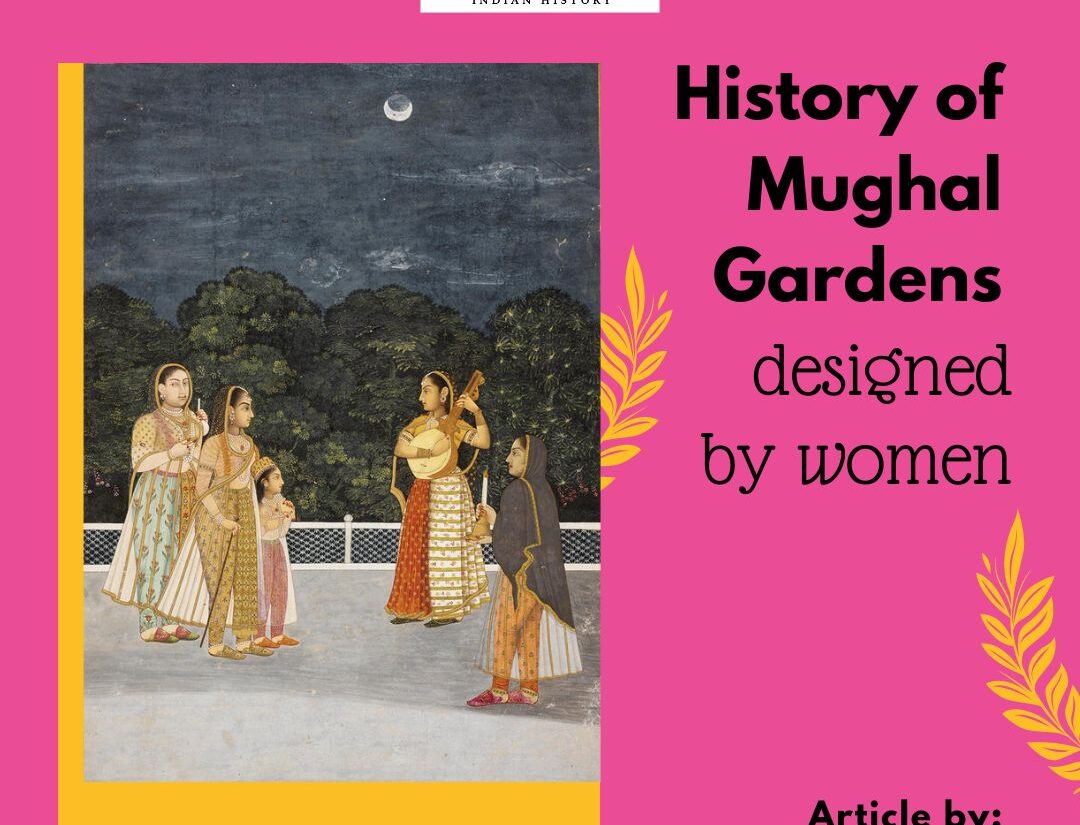
Gardens have become an inseparable part of many households in India, they may vary in size or shape but provide joy. Taking a step back to colonial India, gardens meant so much more than just a part of the household. From gardening vegetables and fruits to hosting a social event, the gardens in a British home were multipurpose. They defined the house’s construction and provided a sense of comfort and familiarity to the British family living in an alien land. The gardens become a symbol of the hierarchy between the colonizer and the colonized.
The British had entered India as traders but soon become a governing agency gaining territory through war and policies. To run the British Raj in this colony, many administrators moved here along with their wives and children, making it a home away from home. As the number of these officials grew profoundly, neighborhoods started emerging in cities like Calcutta. The houses constructed, for example, the earliest settlement at Barrackpur, were different from the native ones. The native houses generally are made in a way to look inwards concentrating on the Veranda and the house around it whereas the houses of the British officials were inspired by the country home of Britain. It was a must for all the houses to have a defined garden enhancing the beauty of the landscape.
Colonial home with lustrous garden
The purpose behind creating houses similar to the English country home was to create a feeling of belongingness for the new families in colonial India. The British were highly concerned about how the native environment affected their children, and providing an English home would remind them of their homeland. A garden was present in every house, not as a separate space but as an extension of the house. The English design of the garden was followed by straight lines of plans and a formal setting. The garden was often divided into a service area and grounds for growing fruits and vegetables. The service areas would often be decorated with garden ornaments and sitting arrangements to entertain guests.
British countryside home
The garden was an important center to host social gatherings, especially for the memsahibs, wives of British officials. In colonial India, there was the construction of a domestic empire, where British values were deeply engraved into the Indian society to complete the process of ‘civilizing’. The memsahibs played the central role in this process and it was their duty to uphold the English values engraving it into their children as well. Social gatherings were an essential way to bring British values into Indian society. It was also a way to strengthen the British community living in India.
The social gathering in the garden
Another reason for the necessity of having a garden in the British household is the urge to seclude themselves from the world of natives. The garden around the house would act as a buffer zone creating distance. Even when it came to the flowers being planted in the gardens, there was an urge to only use British flowers like poppy. The flowers in the garden would vanish the ‘filthy’ smell from the native settlements. These spaces became a place to reinforce the superior status of the British Raj.
Poppy Flower
Gardening of fruits and vegetables was also an essential function of a garden in a household of British household. In the book, ‘ The Complete Indian Housekeeper and Cook’, there is an extensive discussion on how and which produce should be present in the garden. The book is like a guide for young wives of British officials who were navigating how to run a household in colonial India. The writer complains about the way the natives look after the plants and advises the memsahib to keep a close eye on the mali, who is responsible to maintain the gardens. The produce would contribute to direct supply for the needs of the house. The memsahib would also be satisfied by the quality of the fruits and vegetables as she can supervise the maintenance of them herself.
Vegetable Garden
The author mentions two important things that are required for good produce- good manure and good seed. Although they suggest the import of seeds from Britain but that was not economically possible for all the officials of the British Raj. Some of the British plants would not sustain the Indian climate. The book has also given methods to grow certain vegetables like artichokes, cucumbers, and carrots in detail.
Cucumbers are comparatively easy to grow here, while the British seed is preferred, but there is also praise for the quality of the local kheeras as they are to be seeded in January. Another example mentioned in the book is that of beetroot. It is also a favorable crop in the garden flourishing in the salt soil. Each seed produces three plants and has to be carefully separated by the mali. Interestingly when it came to explaining the growth of an eggplant, the author advises the memsahib to trust the mali entirely as they would know the process perfectly.
Although the gardens were a medium of separating the British families from the native, nevertheless they were highly dependent on the same people for the maintenance of the garden. These garden designs have not left with the end of the British raj, rather several families maintain their gardens to the British standard. Tea parties and garden games are still a part of a section of society. Gardens have been an integral part of the Indian history and British gardens are part of the time when an alien land was becoming home to the colonizers. Hence the garden becomes an example of the deep-seated effect of Colonial rule on modern India.
References
- https://issuu.com/reediima/docs/reediimauppal_htsessay
- Roberts, J. (1998). English Gardens in India. Garden History, 26(2), p.115.
- Annie, F. and Gardiner, G. (1902). The Complete Indian Housekeeper & Cook.
Pictures
- https://www.thecottagejournal.com/9-english-country-cottages-fall-love/
- https://www.nybooks.com/articles/2019/04/04/british-raj-india-staying-on/
- https://www.britannica.com/plant/poppy
- https://pbmgarden.blog/2012/06/28/a-colonial-garden/
- May 15, 2024
- 6 Min Read
























